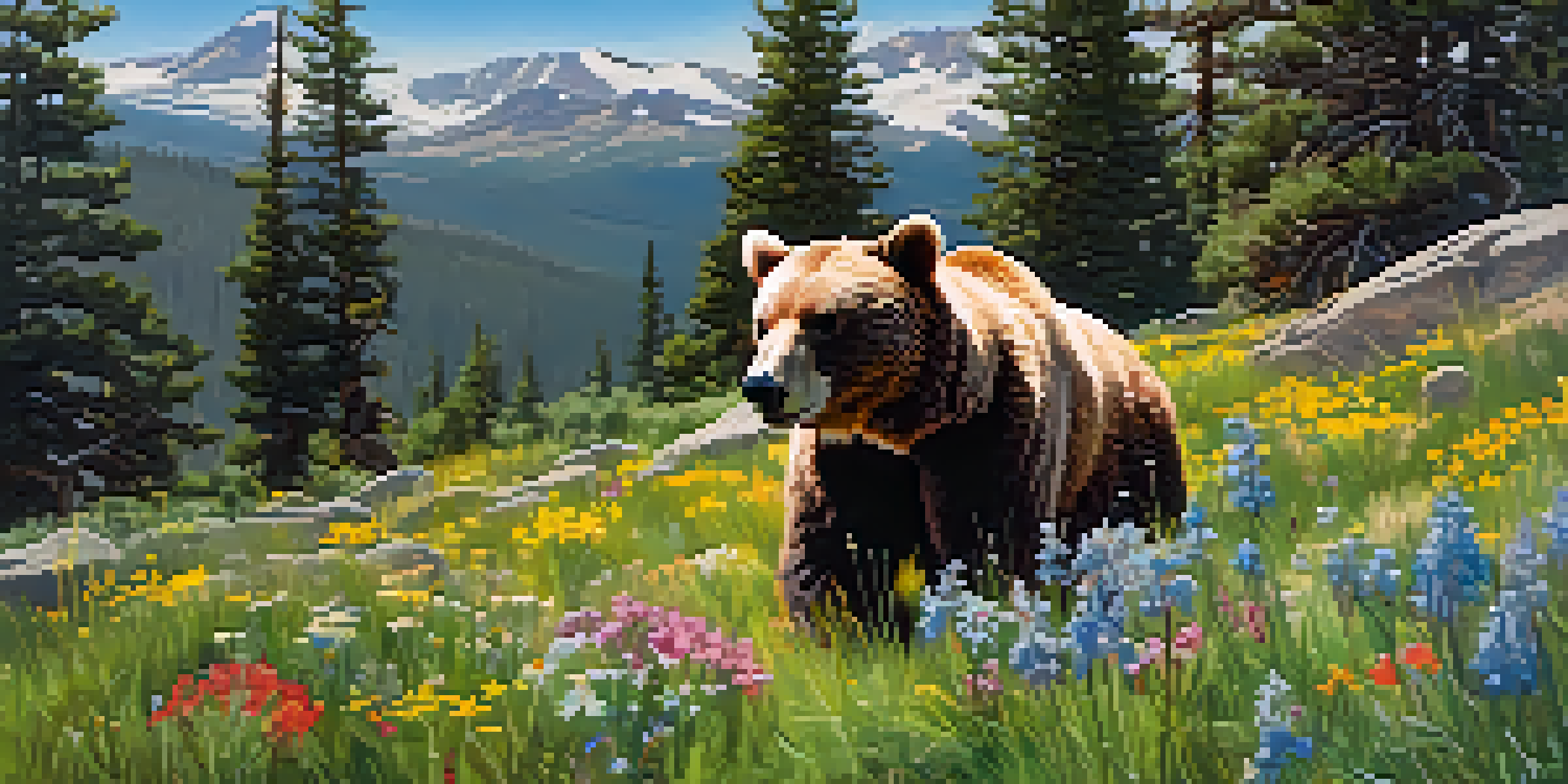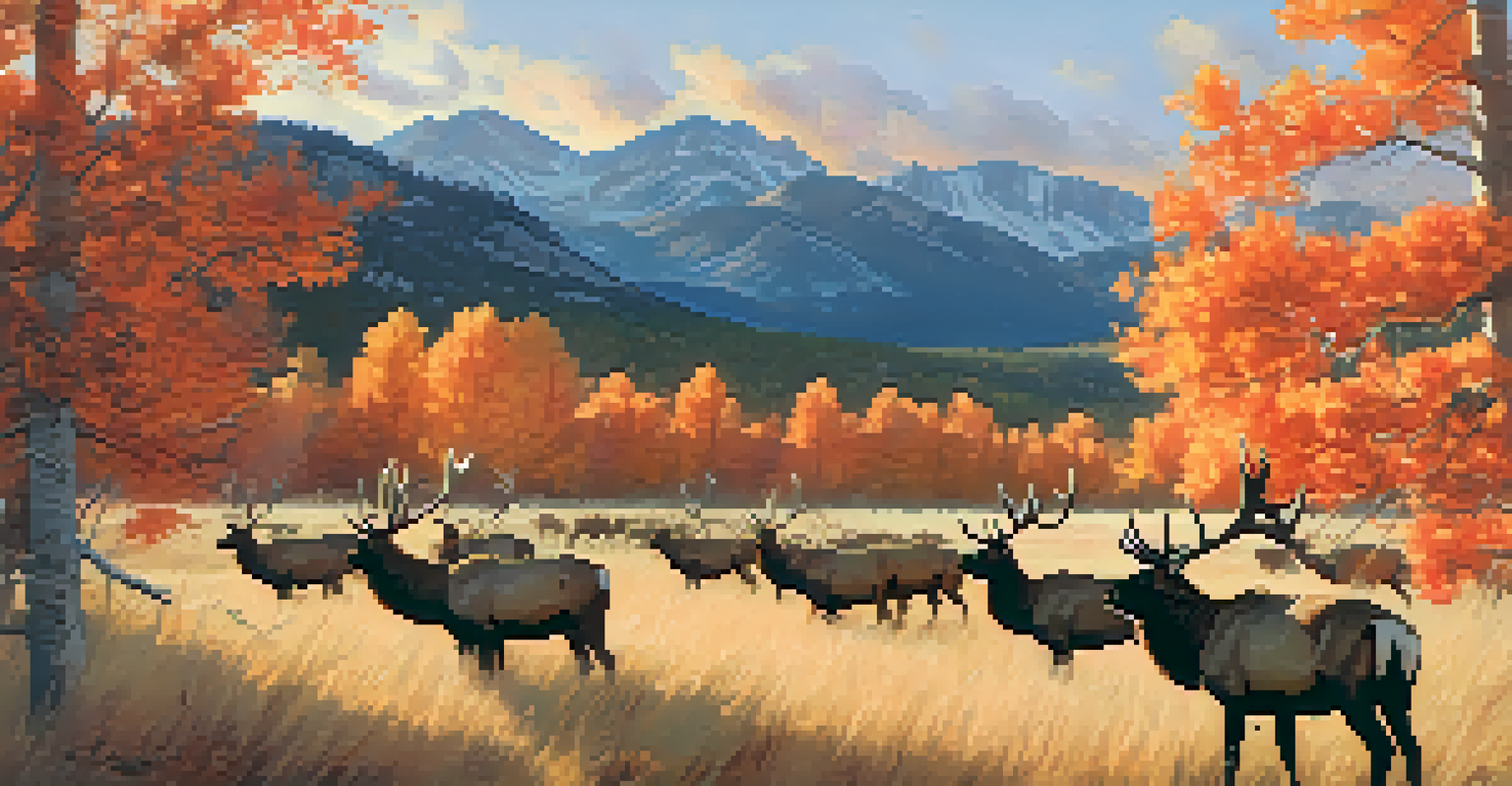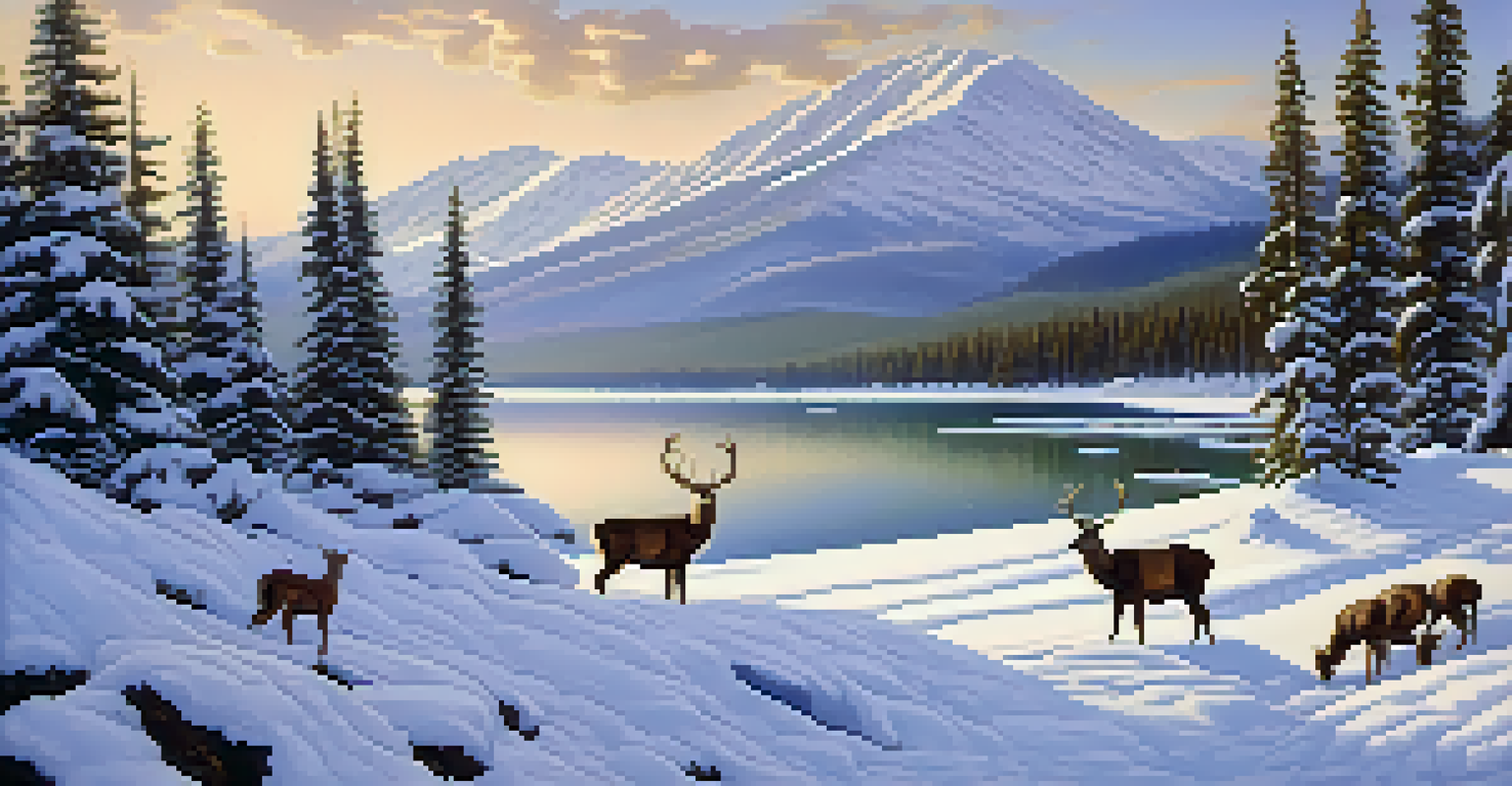Seasonal Wildlife Viewing Opportunities in Colorado Parks

Spring Awakening: Wildlife Comes to Life
As winter melts away, Colorado parks come alive in spring. This is a fantastic time to spot animals emerging from hibernation, particularly bears and deer. The fresh blooms and vibrant greenery attract various bird species returning from their migratory paths, making it a birdwatcher's paradise.
In every walk with nature one receives far more than he seeks.
Visiting parks like Rocky Mountain National Park during this season can offer unique experiences. For instance, the sound of songbirds fills the air, and you might even catch a glimpse of a moose as they venture out to graze. Remember to bring your binoculars for a closer look at these beautiful creatures in their natural habitat.
Spring is also a great time for educational programs in parks, where rangers often lead wildlife viewing tours. These tours provide insights into animal behavior and the ecosystem, enriching your experience as you witness nature's revival firsthand.
Summer Adventures: A Time for Family and Fun
Summer in Colorado is bustling with activity, making it an ideal time for family outings. Parks like Chatfield State Park and Flatirons Vista offer ample opportunities for wildlife viewing while enjoying picnics and hikes. Keep your eyes peeled for playful foxes or the occasional bobcat prowling through the tall grass.

The warm weather also means more visibility for animals, as many species are active during the day. You might spot elk herds grazing in the meadows or hear the calls of young birds learning to fly. Summer evenings often bring out nocturnal animals, so consider a twilight hike for a chance to see creatures like raccoons or owls.
Wildlife Thrives in Every Season
Colorado's parks offer unique wildlife viewing experiences throughout the year, showcasing different species and behaviors in spring, summer, autumn, and winter.
Don't forget that summer is also a prime time for educational programs and guided hikes focused on wildlife. Engaging with knowledgeable guides can enhance your understanding of animal habits, making your wildlife viewing experience even more rewarding.
Autumn Colors: A Spectacle of Wildlife and Foliage
As the leaves change colors, Colorado's parks transform into a picturesque setting, making fall a spectacular time for wildlife viewing. The annual elk rut occurs during this season, where you can hear the majestic bugling of bulls as they compete for mates. This fascinating display is not only a treat for the ears but also for the eyes, as herds gather in the cooler temperatures.
The earth has music for those who listen.
Parks like Estes Park and the San Juan Mountains are particularly stunning in the fall. The backdrop of vibrant oranges and reds complements the sight of wildlife preparing for the winter ahead. Keep an eye out for deer, as they become more visible while foraging to build fat reserves.
Fall is also a quieter time in the parks, allowing for more intimate wildlife encounters. With fewer visitors around, you may find opportunities to observe animals at a closer distance, making it a memorable experience for photographers and nature enthusiasts alike.
Winter Wonders: A Unique Wildlife Viewing Experience
While many think of winter as a time when wildlife is scarce, Colorado's parks offer unique opportunities to see animals in their winter habitats. Animals like elk and deer can often be seen grazing in the snowy meadows, and their tracks in the fresh snow provide clues to their movements. A winter hike can reveal the hidden world of wildlife adapting to the cold.
Visiting parks like Bear Lake or Vail can offer breathtaking winter landscapes and a chance to spot species like snowshoe hares or even the elusive mountain lion. Winter is also a great time for birdwatching, as you might see bald eagles soaring overhead or small flocks of songbirds flitting about in search of food.
Top Parks for Wildlife Viewing
Key parks like Rocky Mountain National Park and Barr Lake State Park provide excellent opportunities for spotting diverse wildlife and engaging in birdwatching.
Additionally, many parks offer snowshoe or cross-country skiing trails that allow for wildlife viewing in a serene setting. The tranquility of winter hiking can enhance your connection with nature, providing an unforgettable wildlife experience as you explore snowy trails.
Top Parks for Wildlife Viewing Year-Round
Colorado is home to numerous parks that provide excellent wildlife viewing opportunities throughout the year. Rocky Mountain National Park, with its diverse ecosystems, is a must-visit for spotting elk, moose, and various bird species. Its extensive trail system allows for exploration in every season, revealing the unique wildlife of each.
Another great option is Barr Lake State Park, known for its rich birdlife. This park is a haven for birdwatchers, especially during migration seasons when thousands of birds pass through. With its scenic lake and wetlands, it offers a picturesque backdrop for observing wildlife in action.
Lastly, consider visiting the Great Sand Dunes National Park, where you can see animals like coyotes and pronghorns against the stunning backdrop of the dunes. Each park has its own charm and unique wildlife, ensuring that every visit can be a new adventure.
What to Bring for an Enjoyable Viewing Experience
To make the most of your wildlife viewing adventures, it's essential to come prepared. Bring binoculars to get a closer look at distant animals without disturbing them. A camera is also a great addition to capture those unforgettable moments, but remember to respect wildlife by keeping a safe distance.
Comfortable footwear is crucial, especially if you plan to hike. Trails can vary in difficulty, so choose a pair of shoes suited for the terrain. Layers are also important in Colorado, as temperatures can change rapidly, particularly in the mountains. Being prepared will help you enjoy your time outdoors, regardless of the season.
Respect Wildlife Guidelines
Maintaining a safe distance and following park regulations are essential for protecting both wildlife and visitors during outdoor adventures.
Finally, consider packing snacks and plenty of water to keep your energy up while exploring. Wildlife viewing can sometimes require patience, so having refreshments on hand will ensure you stay comfortable and ready for any exciting encounters that come your way.
Respecting Wildlife: Guidelines for Observers
As you embark on your wildlife viewing adventures, it's crucial to remember the importance of respecting nature and its inhabitants. Keeping a safe distance from animals not only protects you but also reduces stress on the wildlife. Approaching too closely can disrupt their natural behaviors and put both you and the animals at risk.
Familiarize yourself with park regulations surrounding wildlife viewing. Many parks have specific guidelines to ensure both visitor safety and animal welfare. Following these rules is essential for preserving the beauty of Colorado's wildlife for future generations to enjoy.

Lastly, consider leaving no trace by cleaning up after yourself and minimizing your impact on the environment. By being a responsible observer, you help maintain the delicate balance of these ecosystems, ensuring that Colorado's parks remain a sanctuary for wildlife and a joy for all who visit.